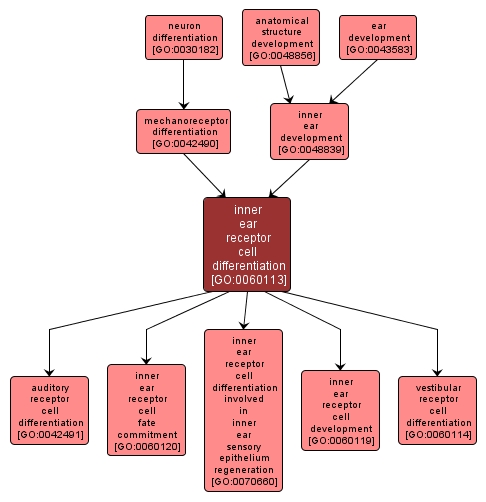| Desc: |
The process whereby relatively unspecialized cells, acquire specialized structural and/or functional features of inner ear receptor cells. Inner ear receptor cells are mechanorecptors found in the inner ear responsible for transducing signals involved in balance and sensory perception of sound. |














